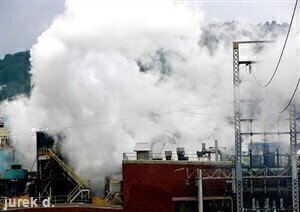Air monitoring
Commercial Vehicle Manufacturers Reduce Air Pollution To Extremely Ambitious Levels
Dec 31 2007
Emission levels from commercial vehicles have already decreased substantially over the past decade. The most advanced trucks on the market produce 75% less NOx and 94% less particulate matter than Euro I trucks in the early 1990s. Particulate matter emissions from the total truck fleet in the EU15 are 40% lower than a decade ago despite the fact that the number of kilometres driven has risen by over 50%. The new Euro VI levels proposed by the industry will reduce NOx and particulate matter emissions by 95 and 98% respectively, compared to the levels at the time of Euro I.
“We are now seeking harmonisation of standards worldwideâ€, Goudriaan added. “The new, highly ambitious emission levels proposed by the industry should enable the EU and the US to align future pollution control standards, paving the way for harmonised standards around the globe.â€
Harmonisation of technical standards is essential for the vehicle manufacturers to stay competitive. The truck industry is a global industry with relatively small production numbers compared to mass production goods. Currently, technical standards and testing methods differ from region to region. This leads to different development and certification tests and to extra costs for manufacturers, public authorities and, ultimately, consumers and society. “Harmonisation is a way of keeping our resources focussed and investments concentrated on the right topicsâ€, said Goudriaan.
The EU first introduced air pollution control or Euro standards in 1991. The emission levels have subsequently been lowered and trucks are now approaching the zero emission level. The European commercial vehicles are the safest, cleanest and most fuel-efficient in the world and the European manufacturers are world leaders.
Digital Edition
IET 35.2 March
April 2025
Air Monitoring - Probe Sampling in Hazardous Areas Under Extreme Conditions - New, Game-Changing Sensor for Methane Emissions - Blue Sky Thinking: a 50-year Retrospective on Technological Prog...
View all digital editions
Events
May 10 2025 Karachi, Pakistan
May 11 2025 Vienna, Austria
May 11 2025 Seoul, South Korea
Salon Analyse Industrielle & Instrumentation
May 14 2025 Paris, France
May 15 2025 Istanbul, Turkey






_(4427399123)-(2).jpg)












